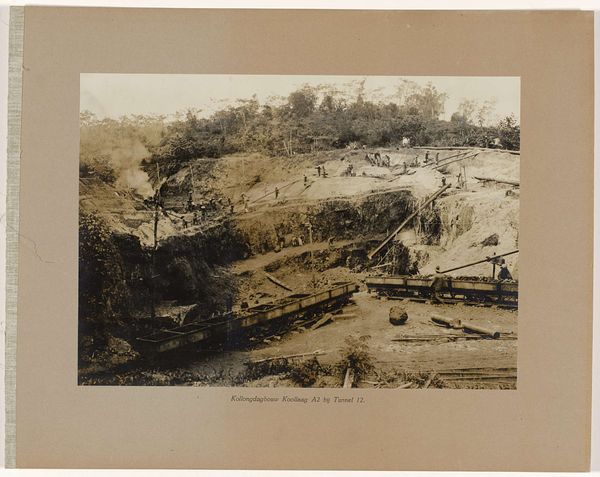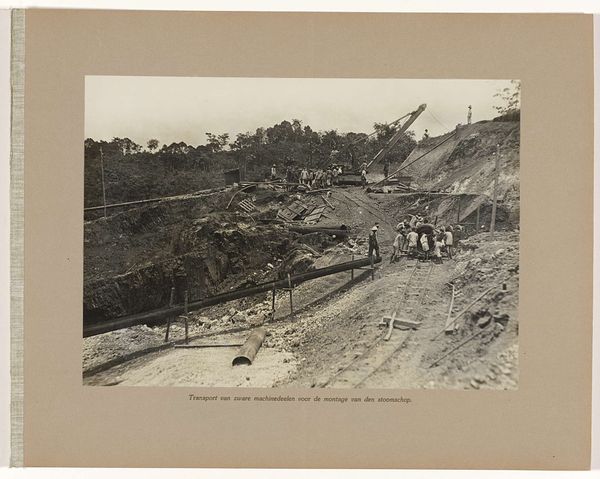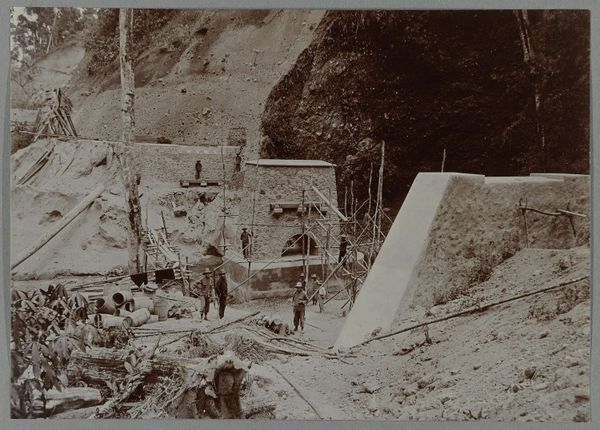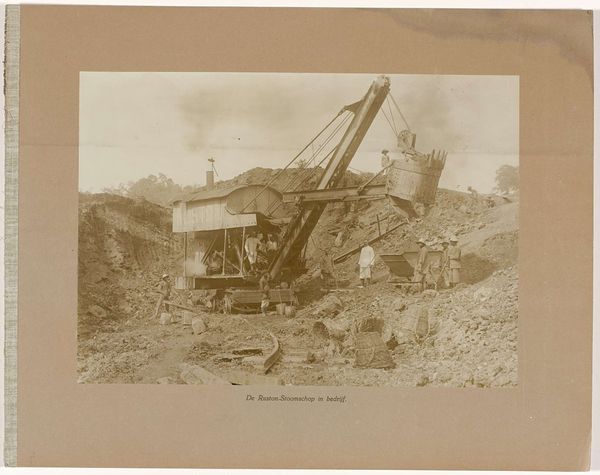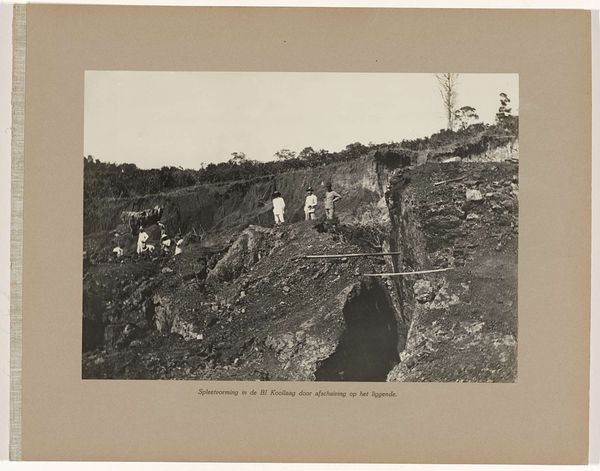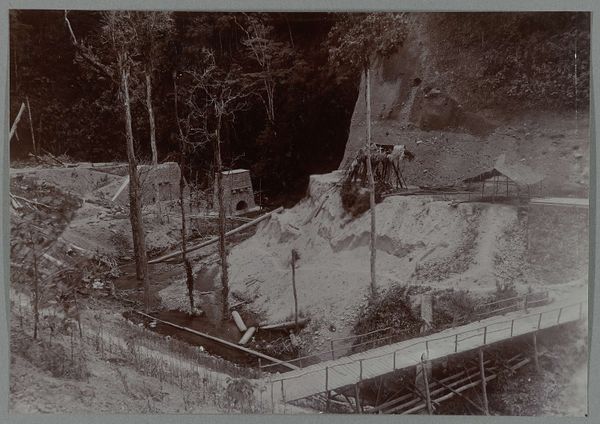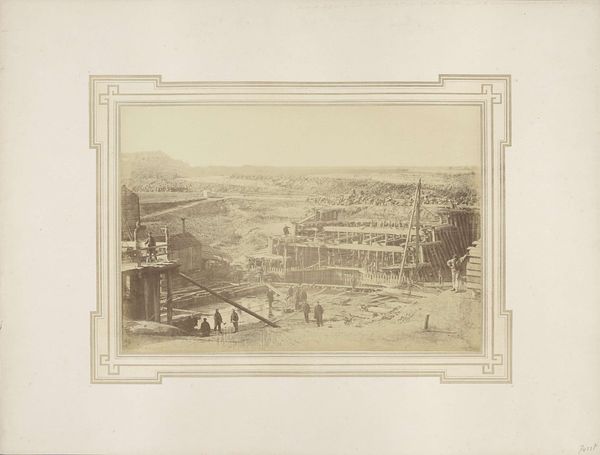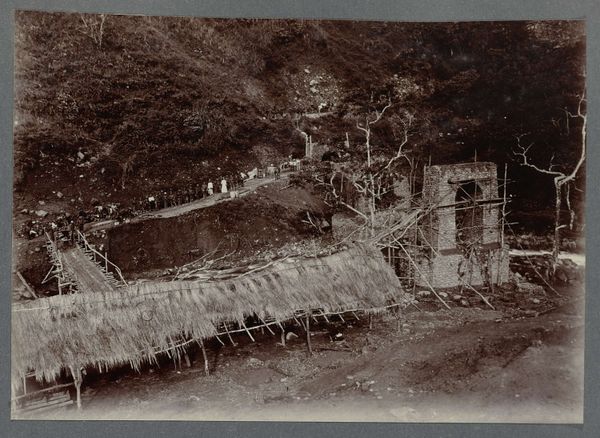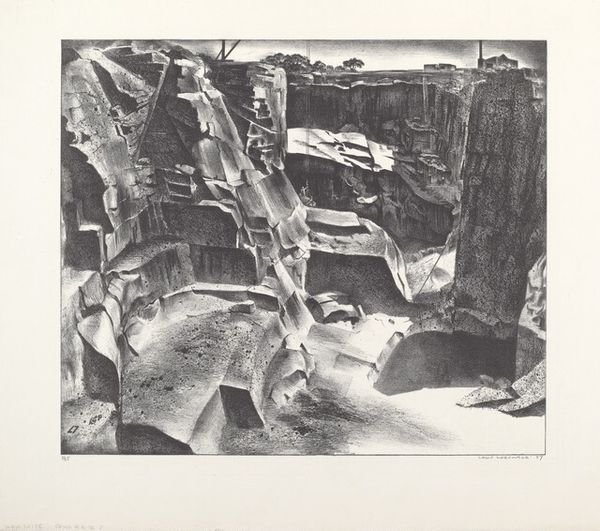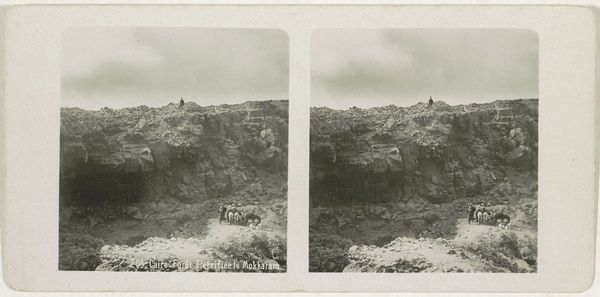
photography, gelatin-silver-print
#
landscape
#
photography
#
gelatin-silver-print
#
realism
Dimensions: height 278 mm, width 392 mm
Copyright: Rijks Museum: Open Domain
Curator: Look at this photograph, "Kollongdagbouw A2 Koollaag bij Tunnel 8," a gelatin silver print, captured sometime between 1921 and 1922. It is housed here at the Rijksmuseum. Editor: It’s a stark scene. The photograph presents this deep pit – immediately conveying a sense of excavation and almost unsettling emptiness. I see a stark contrast of light and shadow which amplifies the brutal nature of the site. Curator: Exactly. Let's consider the context. The image portrays a coal mine. This links it to the wider history of industrialization, a period defined by intense social upheaval, class struggle and resource exploitation. The dark pit and figures could be seen as representing the labor and lives extracted for fuel. Editor: Symbolically, it’s also a powerful image. The coal itself carries cultural weight as a source of energy and industrial progress, but the visual language here portrays the dangerous work, even the degradation of the earth for that fuel. The layering of wooden beams and shoring hints at a constant fight against collapse. Curator: And the presence of the workers in white clothes… It presents such a stark contrast in that grimy, muddy, industrial site. Considering contemporary conversations about ecological justice and labor rights, the image serves as a reminder of the often unseen human cost of development. It brings up questions of safety, fair labor practices, and who profits from these enterprises. Editor: Visually, the repetition of lines and structures almost has an echo to Piranesi, creating a dizzying perspective, a world created by and for this type of extractive industry. Those parallel lines also draw our eyes down and deeper into that unsettling void. Curator: The very process of photography, fixing a specific moment in time, suggests a desire to document this transformation. Photography itself becomes a tool in shaping perceptions of this industry, inviting consideration of whose perspective is being recorded. The work engages with crucial historical, social, and political dialogues. Editor: This photographic rendering carries immense power through stark symbolism, causing the viewer to grapple with our historical moment, its environmental costs, and human efforts. Curator: It provides a potent space to reflect upon progress and our continued dependency on resources.
Comments
No comments
Be the first to comment and join the conversation on the ultimate creative platform.
